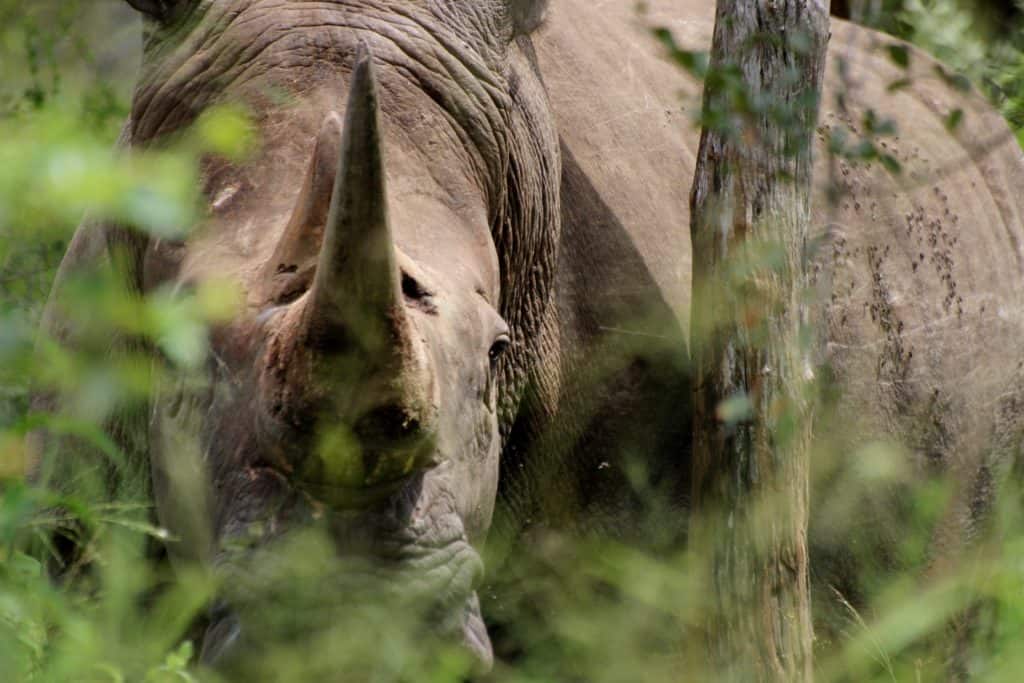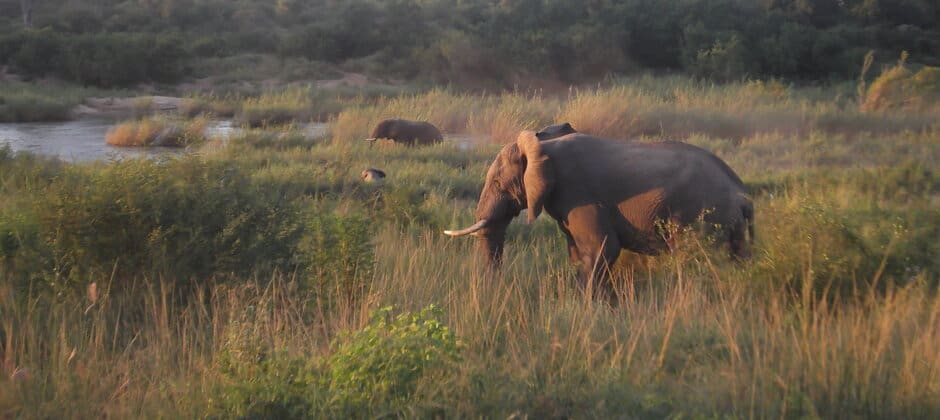Share this article
Q&A: Many imperiled mammals found only in protected areas
Protected areas around the world are some of the last safe havens for many of the world’s jeopardized mammal species.
The discovery, published in a study recently in Conservation Letters, means that one way or another, humans have pushed everything from rhinos to elephants out of many of their former ranges.
It also highlights the importance of protecting the areas where imperiled mammals are still found.
Michela Pacifici, the lead author of the study, first became interested in the topic during a discussion with her co-author James Watson from the University of Queensland in Australia. Watson had noticed that particularly in Southeast Asia, iconic mammal species were found nearly exclusively in protected areas.

Michela Pacifici is the lead author of a recent study tracking imperilled mammals’ distributions around the world.
Courtesy of Michela Pacifici
Pacifici wanted to test if this trend was true on a global scale. “Confirming this trend would have had significant implications for the conservation of mammals, as well as to demonstrate the disproportionate importance of some protected areas in preserving the last populations of imperiled species,” she said.
The Wildlife Society connected with Pacifici to discuss the results of her recent study. The interview is edited for style and brevity.
How would you describe the relationship between protected areas and mammals in the world?
Protected areas are established for diverse conservation purposes. Their effectiveness for conserving mammals varies widely. We know that mammals (and vertebrates in general) have quite a good representation inside protected areas compared to other groups, but the average percentage of mammal global distribution areas protected is still very low — about 10%. Terrestrial protected areas cover about 15% of the Earth’s land surface, while the post-2020 goals of the Convention on Biological Diversity aim at protecting at least 30% of the planet by 2030. Since mammals have a crucial role in providing and maintaining services and functions associated with sustaining balanced ecosystems, and they represent key elements for food supply and tourist attraction, we should aim to maximize the level of protection for key mammal species while planning the increase of the global protected area network to meet the CDB goals.
Why are protected areas so important for imperiled mammals?
In recent decades, mammals have highly suffered from human impact, with 26% of the species now classified as threatened by the International Union for Conservation of Nature. In some regions of the world, protected areas have been important to avoid the loss of species and reduce threats to them. In North America for example, poaching has proven to be much lower inside protected areas, and for some species with very restricted distribution and/or that lost large portions of their range due to human persecution, protected areas represent their last bastions.
How have the distributions of the mammals you looked at changed since 1970?
Approximately 75% of the mammals we observed in our analysis have gone through range changes, and one out of five species has lost more than 50% of their past range of distribution. This is dramatic. Main causes may be global warming, loss of natural areas and the increase of human density. All of these factors especially affect large species such as the white rhinoceros (Ceratotherium simum), the Asian elephant (Elephas maximus) and the addax (Addax nasomaculatus).
You mention in the study that the proportion of species you analyzed in protected areas has doubled since 1970. Why is this?
There are two main explanations for the increase in mammals in protected areas. In the first case, a total increase in protected areas within the distribution range of the species resulted in more protected mammals. That means there was no reduction in the global distribution of the species, and there was a true increase in the level of protection. That was true for one-third of the mammals in our analysis.
For example, the puma (Puma concolor), a widespread species that occurs from Canada to Chile, showed no significant changes in its distribution, but a 17% increase in protected area coverage. This is a very adaptable species, found in every major habitat type of the Americas. Pumas benefit from a net increase in protected land.
But the other side of the coin tells a different story. For more than half of the species, the increase in proportional protection over time is almost entirely due to a net decline of their distribution outside existing protected areas.
Rhinos are good examples to explain the trend toward range decline and increase in protected area coverage. The Indian rhinoceros (Rhinoceros unicornis) is currently protected in 80% of its range, compared to 3% in the 1970s, but the species has lost a dramatic 99.7% of its distribution in the past 50 years, and about 87% of the remaining individuals currently occur in just two protected areas (Kaziranga National Park in India and Chitwan National Park in Nepal).

Large species like this white rhinoceros were proportionately more affected by range changes over the past 40 years. Credit: Michela Pacifici
Do some mammals do fine outside of protected areas?
Of course there are species that have stable or increasing populations. For example, mammals with wide distribution, large populations, and that are highly tolerant to habitat alteration can do fine outside protected areas. In general, species in Europe and North America are in a better situation compared to those living in the tropics, where the levels of animal exploitation and habitat destruction have drastically intensified in recent years. These tropical regions can also experience inadequate regulation of wildlife harvesting.
What are the conservation implications of your study?
Our study clearly shows that protected areas are pivotal for ensuring the persistence of key mammals that lost a disproportionate amount of their distribution. When these sites are well managed, resourced and well-placed within the wider landscape, they have every chance in halting the threatening processes causing the decline of iconic mammal species. In particular, areas in sub-Saharan Africa and Southeast Asia are a priority for conservation investment, as they contain enormous percentages of threatened terrestrial mammals.
Header Image: Animals like this African elephant (Loxodonta Africana), pictured in Kruger National Park in South Africa, face threats outside of protected areas. Credit: Michela Pacifici








